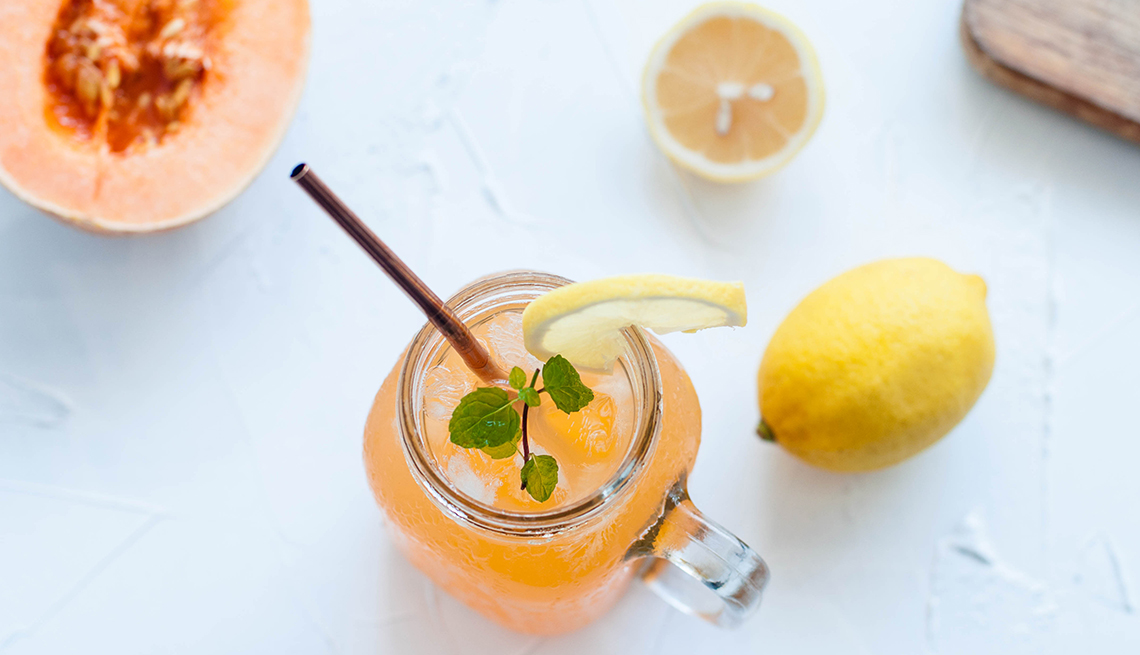How (and What) You'll Be Eating and Drinking This Year
Whether you want to get healthier or simply tempt your taste buds, here are 2021's food trends to try
En español | Year-round outdoor dining, grocery shopping exclusively online, TikTok kitchen hacks — these 2020 food trends were nearly unpredictable 12 months ago. This year promises to bring more novel ways to plan and eat your meals at home, plus purpose-driven snack foods (think mushroom jerky to “upcycled” chips and banana brittle) and an expanded mocktails menu (faux-secco and tequila seltzer included). Here's a look at the potentially transformative food trends for 2021.
More mocktails: Tequila seltzer, anyone?
The U.S. market for non- and low-alcoholic spirits is expected to grow by more than 35 percent this year as people embrace the mocktail trend for a host of reasons. “During a year filled with stress, anxiety and loss, people were relying on alcohol as a coping mechanism. Now, individuals are looking to get their drinking back to a comfortable place,” says Hilary Sheinbaum, author of The Dry Challenge: How to Lose the Booze for Dry January, Sober October, and Any Other Alcohol-Free Month. “For some, that method might be cutting back on consumption, or giving up booze for a month or eliminating alcohol forever."
As interest has soared, the quality of nonalcoholic beer, wine and spirits has improved, and options — including premade nonalcoholic cocktails that you just pour over ice — have expanded. Some favorites include Gruvi nonalcoholic prosecco and rosé, Athletic Brewing's IPA, spirits from Lyres and Volley, a low-alcohol tequila seltzer. “These beverages are just as good as booze,” Sheinbaum says, “but you're not going to have a hangover the next day."
Meal kits by the dozen, now with wellness options
Sales of meal kits also surged in 2020 and experts expect that trend to continue even after restaurants reopen. Bonnie Taub-Dix, a registered dietician, notes that people who try out a meal-kit service come to appreciate the time-saving, menu-expanding benefits. “You don't have to stress out about planning your meals, and you don't have to go food shopping for those meals since they will be delivered to your door,” she says. Another diet-friendly bonus? “Preparing a meal with portions pre-measured.”
AARP Membership -Join AARP for just $12 for your first year when you enroll in automatic renewal
Join today and save 25% off the standard annual rate. Get instant access to discounts, programs, services, and the information you need to benefit every area of your life.
Meal kit companies have now expanded their clean-eating offerings. Blue Apron, for instance, just launched a menu that focuses on wellness, including carb-conscious options. Companies like Green Chef, Sun Basket and Purple Carrot offer vegetarian-friendly kits geared specifically toward healthy eating.
Leftovers 2.0: Banana brittle and more from snack brands making more from less
Rising awareness about the tremendous amount of unnecessary food waste in the U.S. led a handful of grocery-delivery and snack brands, including the Ugly Company, Misfits Market and Imperfect Foods, to champion food that may not be aesthetically pleasing but is beautiful on the inside.
Now, manufacturers are taking it one step further by “upcycling": using parts of foods that would normally be tossed in the trash, from overripe bananas to soybean pulp, to make tasty new products. The Ugly Company will debut a line of Pulp Pantry Pulp Chips this year. Some others to have on your radar: Spudsy Sweet Potato Puffs; Barnana, which makes tortilla chips, chewy fruit bites and crispy banana brittle; and Regrained snacks and bars, made from the by-product of beer brewing.
Garbanzos: The “in” bean pops up in cereal, desserts
The most poppin’ plant-based protein is the one you already know and love: the humble but versatile chickpea. Mediterranean and vegan diets coupled with a renewed interest in shelf-stable foods propelled this humble legume into the spotlight — and more than one kind of packaged food. Pasta, flour and even cereal have all gotten the chickpea treatment, with bonus protein and fiber. There are even frozen desserts made from aquafaba, the starchy liquid in canned chickpeas. “As more consumers adopt a flexitarian or plant-based lifestyle, chickpeas provide more plant-based choices that don't compromise on flavor or texture,” says Rachel Bukowski, senior team leader of product development at Whole Foods Market, which included chickpeas on its annual food trends prediction report for 2021. They're good for the environment, good for your wallet and a good source of the protein you need more of as you age.
Mango and Mushroom Jerky: Better than processed meat sticks
As the demand for healthy, shelf-stable snacks continues to grow, manufacturers have responded with a new twist on an old favorite: meat-free jerky. Dehydrated fruits, veggies and even mushrooms tend to be lower in sodium and higher in vitamins, minerals and fiber compared to traditional beef and meat-based jerkies, while being packed with flavor. “We are seeing all kinds of produce from mushrooms to jackfruit being served jerky-style, providing a new, shelf-stable way to enjoy fruits and veggies,” says Bukowski, who notes that fruit and veggie jerkies also tend to be lower in sodium and higher in vitamins, minerals and fiber than traditional beef and meat-based snack sticks. Options to look for: Pan's Zesty Thai Mushroom Jerky, Solely Organic Mango with Chili & Salt Fruit Jerky and Wild Joy Banana Jerky.



